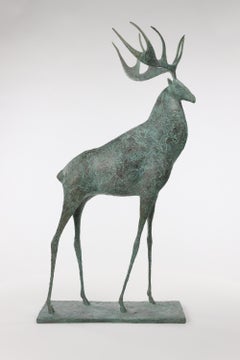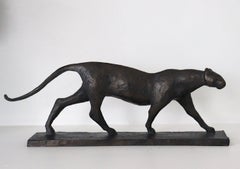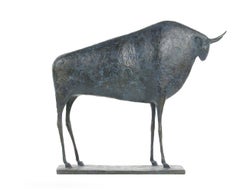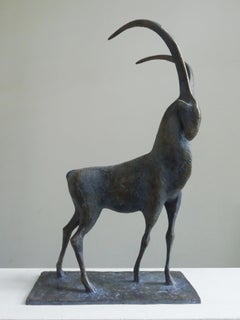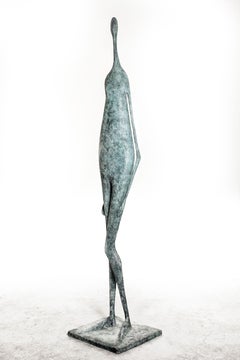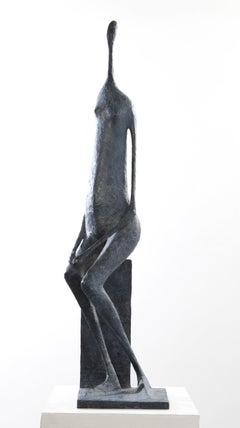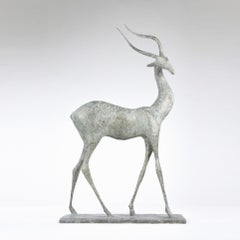Yermia Pierre
2010s Contemporary Figurative Sculptures
Bronze
2010s Contemporary Figurative Sculptures
Bronze
2010s Contemporary Figurative Sculptures
Bronze
Early 2000s Contemporary Figurative Sculptures
Bronze
2010s Contemporary Figurative Sculptures
Bronze
2010s Contemporary Figurative Sculptures
Bronze
2010s Contemporary Figurative Sculptures
Bronze
2010s Contemporary Figurative Sculptures
Bronze
2010s Contemporary Figurative Sculptures
Bronze
2010s Contemporary Figurative Sculptures
Bronze
Early 2000s Contemporary Figurative Sculptures
Bronze
2010s Contemporary Figurative Sculptures
Bronze
2010s Contemporary Figurative Sculptures
Bronze
2010s Contemporary Figurative Sculptures
Bronze
2010s Contemporary Figurative Sculptures
Bronze
2010s Contemporary Figurative Sculptures
Bronze
2010s Contemporary Figurative Sculptures
Bronze
Early 2000s Contemporary Nude Sculptures
Bronze
2010s Contemporary Nude Sculptures
Bronze
2010s Contemporary Nude Sculptures
Bronze
2010s Contemporary Figurative Sculptures
Bronze
2010s Contemporary Figurative Sculptures
Bronze
2010s Contemporary Figurative Sculptures
Bronze
2010s Contemporary Figurative Sculptures
Bronze
2010s Contemporary Figurative Sculptures
Bronze
2010s Contemporary Figurative Sculptures
Bronze
2010s Contemporary Figurative Sculptures
Bronze
2010s Contemporary Figurative Sculptures
Bronze
2010s Contemporary Figurative Sculptures
Bronze
2010s Contemporary Figurative Sculptures
Bronze
2010s Contemporary Figurative Sculptures
Bronze
2010s Contemporary Figurative Sculptures
Bronze
Early 2000s Contemporary Figurative Sculptures
Bronze
2010s Contemporary Figurative Sculptures
Bronze
2010s Contemporary Figurative Sculptures
Bronze
2010s Contemporary Figurative Sculptures
Bronze
2010s Contemporary Figurative Sculptures
Bronze
2010s Contemporary Figurative Sculptures
Bronze
2010s Contemporary Figurative Sculptures
Bronze
2010s Contemporary Figurative Sculptures
Bronze
2010s Contemporary Figurative Sculptures
Bronze
2010s Contemporary Figurative Sculptures
Bronze
2010s Contemporary Figurative Sculptures
Bronze
2010s Contemporary Figurative Sculptures
Bronze
2010s Contemporary Figurative Sculptures
Bronze
2010s Contemporary Nude Sculptures
Bronze
2010s Contemporary Figurative Sculptures
Bronze
2010s Contemporary Figurative Sculptures
Bronze
2010s Contemporary Figurative Sculptures
Bronze
2010s Contemporary Figurative Sculptures
Bronze
2010s Contemporary Figurative Sculptures
Bronze
Early 2000s Contemporary Figurative Sculptures
Bronze
Early 2000s Contemporary Figurative Sculptures
Bronze
2010s Contemporary Figurative Sculptures
Bronze
2010s Contemporary Figurative Sculptures
Bronze
2010s Contemporary Figurative Sculptures
Bronze
2010s Contemporary Figurative Sculptures
Bronze
2010s Contemporary Figurative Sculptures
Bronze
- 1
Yermia Pierre For Sale on 1stDibs
How Much is a Yermia Pierre?
Pierre Yermia for sale on 1stDibs
Since his debut on the Paris art scene in 1990, Pierre Yermia has received considerable acclaim for his contemporary bronze sculptures depicting dreamlike human forms and animal bodies. Yermia’s visually arresting figurative and nude sculptures are characterized by voluminous torsos and slender, elongated limbs that seem to stretch with gravity and vertical movement.
Born in 1964 in Suresnes, France, Yermia attended the School of Fine Arts in Toulouse from 1982 to 1984, where he studied under sculptor Aroldo Zavaroni. From 1984 to 1988, he continued his studies at the School of Fine Arts in Paris.
“My work is a constant quest for an unlikely and precarious moment of equilibrium, where strength and fragility are simultaneously confronted,” he has stated. For instance, in Yermia’s 3 Standing Figures V, three human figures are represented with willowy forms while leaning into a harmonious balance. In Feline VI, the sleek, bronze figure of a wild cat represents “a pure moment of grace, of balance, in which you feel both the frailty of the living . . . and its force.”
Critics have lauded Yermia’s works, which have won several awards. He won the Lauriers Wiso Sculpture Award in 1990, the Vermeille Medal from the Lutèce Internationale Academy in 1991, the City of Ernée Award in 2000, the City of Charenton Lions Club Award in 2011, the City of Charenton’s Award in 2016 and the Sculpture Prize at the 67th Salon de Charenton in 2020. He regularly presents his work in exhibitions throughout France, the United Kingdom and the United States.
On 1stDibs, discover a range of modern Pierre Yermia sculptures.
A Close Look at Contemporary Art
Used to refer to a time rather than an aesthetic, Contemporary art generally describes pieces created after 1970 or being made by living artists anywhere in the world. This immediacy means it encompasses art responding to the present moment through diverse subjects, media and themes. Contemporary painting, sculpture, photography, performance, digital art, video and more frequently includes work that is attempting to reshape current ideas about what art can be, from Felix Gonzalez-Torres’s use of candy to memorialize a lover he lost to AIDS-related complications to Jenny Holzer’s ongoing “Truisms,” a Conceptual series that sees provocative messages printed on billboards, T-shirts, benches and other public places that exist outside of formal exhibitions and the conventional “white cube” of galleries.
Contemporary art has been pushing the boundaries of creative expression for years. Its disruption of the traditional concepts of art are often aiming to engage viewers in complex questions about identity, society and culture. In the latter part of the 20th century, contemporary movements included Land art, in which artists like Robert Smithson and Michael Heizer create large-scale, site-specific sculptures, installations and other works in soil and bodies of water; Sound art, with artists such as Christian Marclay and Susan Philipsz centering art on sonic experiences; and New Media art, in which mass media and digital culture inform the work of artists such as Nam June Paik and Rafaël Rozendaal.
The first decades of the 21st century have seen the growth of Contemporary African art, the revival of figurative painting, the emergence of street art and the rise of NFTs, unique digital artworks that are powered by blockchain technology.
Major Contemporary artists practicing now include Ai Weiwei, Cecily Brown, David Hockney, Yayoi Kusama, Jeff Koons, Takashi Murakami and Kara Walker.
Find a collection of Contemporary prints, photography, paintings, sculptures and other art on 1stDibs.
Finding the Right Figurative-sculptures for You
Figurative sculptures mix reality and imagination, with the most common muse being the human body. Animals are also inspirations for these sculptures, along with forms found in nature.
While figurative sculpture dates back over 35,000 years, the term came into popularity in the 20th century to distinguish it from abstract art. It was aligned with the Expressionist movement in that many of its artists portrayed reality but in a nonnaturalistic and emotional way. In the 1940s, Alberto Giacometti — a Swiss-born artist who was interested in African art, Cubism and Surrealism — created now-iconic representational sculptures of the human figure, and after World War II, figurative sculpture as a movement continued to flourish in Europe.
Lucian Freud and Francis Bacon were some of the leading figurative artists during this period. Artists like Jeff Koons and Maurizio Cattelan propelled the evolution of figurative sculpture into the 21st century.
Figurative sculptures can be whimsical, uncanny and beautiful. Their materials range from stone and wood to metal and delicate ceramics. Even in smaller sizes, the sculptures make bold statements. A bronze sculpture by Salvador Dalí enhances a room; a statuesque bull by Jacques Owczarek depicts strength with its broad chest while its thin legs speak of fragility. Figurative sculptures allow viewers to see what is possible when life is reimagined.
Browse 1stDibs for an extensive collection of figurative sculptures and find the next addition to your collection.

